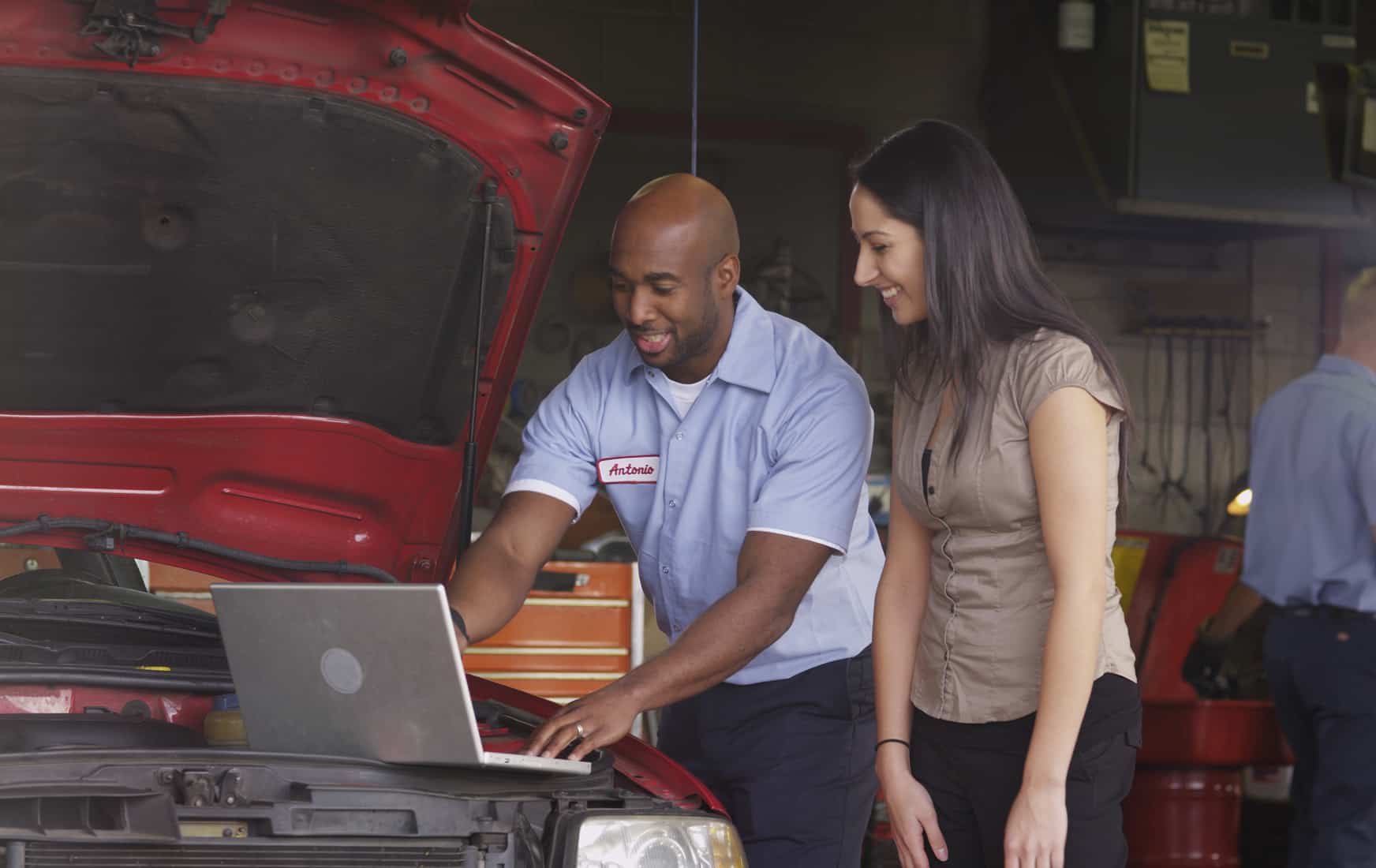
Until you’re a mechanic or a serious motor vehicle enthusiast, you probably don’t spend a lot of time thinking about your car’s general condition unless you notice something seriously wrong. But when a ‘check engine’ light starts flashing or a strange sound rumbles beneath the hood, we all know it’s time to bring it to a garage for servicing. From both a legal and safety perspective, however, regular inspections should not be something left solely to these professionals. As a vehicle owner and/or driver, you should ensure your car is always in appropriate condition for safe operation on the road. In this blog post, we review the law and offer some tips for performing your own regular inspections.
The Law
In general, all of the components and equipment that comprise your car must comply with the standards set out in the Motor Vehicle Safety Act, and Motor Vehicle Safety Regulations. To enforce these laws, the Highway Traffic Act permits police officers to require a driver of a car to stop, move to a safe location, and submit the car (including any equipment or trailer attached to it) to undergo tests and examinations.
If a car is found to have a defect or be in a dangerous condition, a police officer may require the driver to repair the defect, order the car removed from the road, prohibit operation of the car on the road until the defect is repaired, and even seize the car’s license plates. Any driver who refuses to comply with such requirements can be fined up to $1,000.00.
Safety Considerations
While not always convenient, it is important that you inspect your vehicle as frequently as possible before driving it. Such an inspection may alert you to defects or deficiencies and ultimately prevent a car accident.
Exterior Inspection
The owner’s manual is a good starting point for specific components of your car, but when undertaking an exterior inspection, you should generally look for:
- New damage to the body (cracks, paint chips, rust, rough spots), frame, windshield (scratches, chips, cracks), windows, and structure of the car;
- Broken or fractured headlights, tail lights, hazard lights, and/or turn signals;
- Flat or under-inflated tires;
- Working doors, hood, trunk, and fuel door/cap;
- Fluid or liquid spills and leaks under the car;
- Improperly secured items (e.g. bicycles, skis, cargo);
- Debris, dirt, ice, or snow that may impede steering, lighting, visibility or potentially fall from the car and create a hazard for other drivers;
- Proper suspension (ensure that the car sits level and does not sag to one side)
A Note on Tire Inspection
With the passage of time (and kilometres), and exposure to the elements, tires deteriorate, crack, and have less traction. However, tires must always meet the standards prescribed by the Motor Vehicle Safety Act. The Ministry of Transportation states tires should not be more than 10 years old[1]. We recommend that you check with your car and tire manufacturer for guidance as some tires should be replaced after six years. Additional requirements include:
- Replacing tires that have bulges, bumps, deep cuts, exposed tread, and/or tread that has a depth of less than 1.5 millimetres.
- Proper sizing – no tire can be smaller than the manufacturer’s required minimum size. Similarly, a tire cannot be so large that it interferes with or impedes the safe operation of the car.
- Using similar tires on all four wheels (with the exception of the emergency spare tire) which are intended for road use. Any tire that is specified as “not for highway use” or “farm use only” cannot be used on a car that travels on the road.
Ensure proper air pressure in whichever tires are installed on your car, and regularly inspect the tires on your car for tread-wear. And remember, Transport Canada recommends that you install winter tires or “all-season” tires during months when the temperature is near or below freezing or when there is likely to snow or ice on the ground.
Interior Inspection
When you sit in the driver’s seat, look to see whether you have an unobstructed view around your entire car. Leaving aside blind spots, you should be able to turn and see 360-degrees from within the car. Also, be sure to look for warning lights on the dashboard, improperly secured items, and whether the headlights are providing adequate illumination. You should also spend time examining:
- Seats – adjust the headrest, incline, and distance from the steering wheel/pedals;
- Seatbelts – ensure proper functioning (securing and release), height, and tension;
- Interior lights, glovebox lights, and mirror lights; and
- Controls and accessories – regularly test the emergency/hand brake, mirror adjustments, rear-window defrost, power windows, horn, steering wheel tilt, horn, and release switches for the hood, trunk, and gas cap.
In Transit
As you drive, be vigilant for unusual noises from the engine, brakes, and exhaust system, and be sure to note any warning lights which may come on during your journey.
If you plan to embark on a lengthy journey, it is critical for you undertake a detailed inspection of your car, which includes:
- The engine (when cold) – check belts for defects, hoses for possible leaks or cracks, rust spots, and ensure that the oil, coolant, windshield washer fluid, and other essential fluids are at required levels.
- Lights – headlights (high and low beams), brake lights, hazard lights, reversing lights, and turn signals.
- Windshield wipers (front and rear, if applicable).
- Tire condition – test for appropriate pressure levels on all tires and look for any wear, balding, cuts, or leaks (see above for additional aspects).
- Spare tire and accompanying repair equipment.
Maintenance
There is no substitute for regular maintenance by a licensed mechanic. The schedule for such maintenance is prescribed by the manufacturer of your car and is typically based on mileage or time intervals. Regular maintenance includes:
- Brake inspection;
- Oil and other fluid changes;
- Tire rotation; and
- Fuel filter replacement.
With care, attention to detail, and vigilance, you can help to ensure that your car is in the best condition possible for operation on the road.
For more information on the severe injuries that can result from car accidents caused by unsafe vehicles, contact HSH Founding Partner and personal injury lawyer James R. Howie at jrhowie@hshlawyers.com or 416-361-3551.
[1] http://www.mto.gov.on.ca/english/dandv/driver/handbook/section5.1.4.shtml






